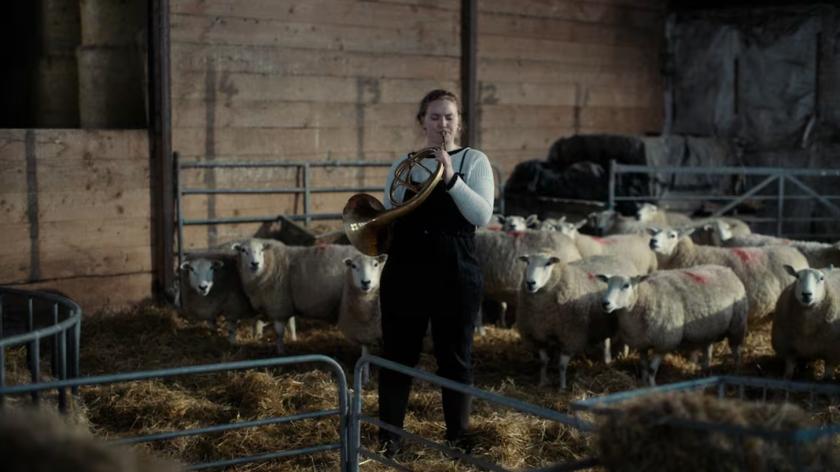Orla Barry laughed when she was advised to take up sheep farming, and not just because she had no experience. “Orla with the sheep eyes,” she calls herself and, indeed, in a stylized self-portrait, she does seem to have the placid, watchful gaze of a ewe.
After 16 years as a working artist in Brussels, Barry inherited her father’s Wexford farm and grew her flock. Today she tends 29 white Lleyn sheep, whose black-lined eyelashes make them look like hung-over nightclubgoers who fell asleep in their makeup.
In Cara Holmes’s lyrical documentary, Barry – and the sheep and the Border Collie watching over them all – embody the dilemma of the modern farmer. As eerie nighttime shots of the dark green landscape open the film, Holmes’s camera and Barry’s torch locate the grazing flock under her protection. Moon-white, like ghosts, the creatures stare into the light, at us: It’s an almost supernatural effect that sets the tone for this unique labour of love.
 Striding through mud and rain, Barry (pictured right) is both a true countrywoman and an artist who enjoys a challenge. But she confesses that if she had known how grueling her new life would be, she never would have taken it on. She clearly adores her animals, calling them Big Daddy, Little Daddy, and an assortment of pretty female names. And they respond to her with trust and an amusing call and response, baa’ing at her like an old friend.
Striding through mud and rain, Barry (pictured right) is both a true countrywoman and an artist who enjoys a challenge. But she confesses that if she had known how grueling her new life would be, she never would have taken it on. She clearly adores her animals, calling them Big Daddy, Little Daddy, and an assortment of pretty female names. And they respond to her with trust and an amusing call and response, baa’ing at her like an old friend.
The film is surprisingly unsentimental: At one point, Barry carries two small lambs by their front legs, like she’s toting a couple of handbags. The lambs’ mother registers its concern, following closely behind them.. After Barry reveals her precarious financial situation, though, Notes From Sheepland weaves together two tales – the connection between people and animals, and our casual heartlessness toward them, and a struggle to make sense of it.
To make ends meet, lambs and ewes past breeding age get shipped off for slaughter. Despite the Lleyns’ extravagantly fluffy wool, and Ireland’s worldwide fame in textiles and weaving, sheep meat is more valuable than the animals’ coats. Sheep wool has little cash value these days; It’s not even worth the money to pay for shearing. Barry’s mournful response is to create art out of the leftover bales of wool, including a huge Aran jumper overwritten in text. The garment’s history is woven into its physical form. “I often forget which role I’m playing, farmer or artist,” Barry says.
Director Holmes braids Barry’s two lives together, with able support from cinematographer Luca Traffarelli, following the artist-shepherd from quiet oontemplation in her studio to a livestock fair where sheep, shampooed and pampered, compete for prizes. (Who knew there were so many different kinds of sheep?) Swimming naked in a farm pond, Barry says that the hard work is “primal care for the soul.” Here’s hoping that, as per Notes from Sheepland, the important work of farmers and artists endures.















Add comment